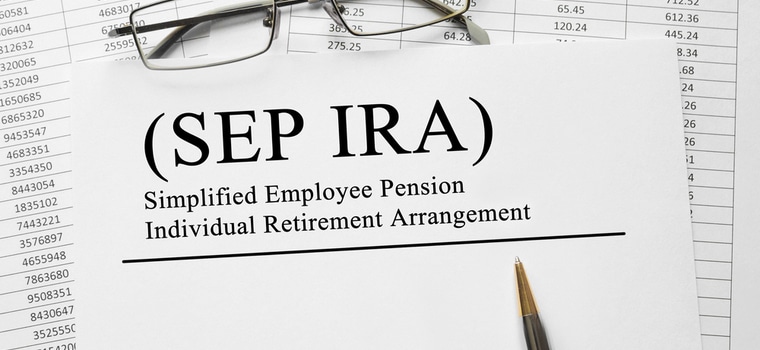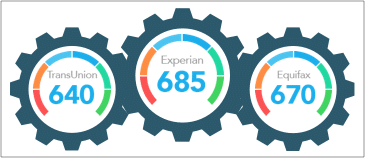A Simplified Employee Pension (SEP) Individual Retirement Account (IRA) is an easy way for owners of small businesses to set up retirement accounts for themselves and their employees. A SEP IRA is a form of traditional IRA and conforms to many of the same rules as a traditional IRA. Contributions are deducted from your taxable income in the year they are made and distributions are taxed as income in the year they are made.
A SEP IRA does have one unique feature: employers are required to contribute to employee accounts, and they must contribute the same percentage of total income to employee accounts that they contribute to their own account.
What is a SEP IRA?
A SEP IRA is designed to help owners of very small businesses set up retirement accounts for themselves and their employees. Unlike other forms of IRA, a SEP IRA is employer-sponsored. Employers set up accounts for their employees.
Employers contribute to employee SEP IRA accounts, but the employees control the money and make their own investment decisions within the options set up by the plan provider. Employer contributions come under employee control as soon as they are made.
The employer must contribute to employee accounts. The employer’s contribution to employee accounts must be the same percentage of income as the employer’s contribution to his or her own account. Contributions must be the same percentage of the individual’s salary for all accounts under a SEP IRA plan.
If you own a business and contribute 20% of your income to your SEP IRA you must also contribute 20% of all participating employees’ salaries. Because of that requirement, the SEP IRA is mainly used by the owners of businesses that have no employees.
Who Is Eligible For a SEP IRA?
A business owner is eligible for a SEP IRA, as are employees who meet these qualifications:
- The employee must be 21 years of age or older.
- The employee must have worked for the employer for three out of the last five years.
- The employee must have earned at least $600 from the employer in the last year.
Employers may exclude these employees from a SEP IRA Plan:
- Employees Who Belong to a Union That Has Retirement Benefits Defined by a Collective Bargaining Agreement
- Nonresident Alien Employees Who Do Not Receive Us Wages or Any Form of Compensation From the Employer
Individual employers may adopt their own qualifications for a SEP IRA plan but their requirements may not be more limited than the IRS requirements.
Contributing to a SEP IRA
The contribution limits for a SEP IRA are significantly larger than those for a traditional IRA. If you have a regular IRA you can contribute only $6000 per year (in 2019 and 2020) if you are under age 50 or $7000 if you are over age 50.
If you have a SEP IRA your contribution limit in 2020 is $57,000 or 25% of your income, whichever is smaller. The limit is adjusted every year. The SEP IRA does not offer a “catch-up contribution” for people over 50.
An individual can have both a SEP IRA and a traditional or Roth IRA. Employer contributions to an employee’s SEP IRA do not count toward the contribution limit for a traditional IRA.
A SEP IRA allows employers to skip contributions in years when the business receives insufficient income. If an employer that skips contributions in a year no contributions may be made to any account under the plan, including the employer’s account.
Employers receive a tax deduction for contributions to employee SEP IRA accounts.
Using the Money in a SEP IRA
Disbursements from a SEP IRA follow the same rules as disbursements from a traditional IRA:
- There are penalties for early withdrawal. If you make withdrawals before age 59 ½ the money will be taxed as income and you will pay an additional 10% penalty, except under certain specific conditions.
- Withdrawals will be taxed. Starting at age 59 ½ you may make withdrawals with no penalty. Withdrawals will be taxed as income.
- There are required minimum distributions. Starting at age 72 you must make required minimum distributions, which will be taxed as income.
If an employee leaves their job they may maintain their account with the SEP IRA provider or roll the funds over into a different IRA.
Advantages and Disadvantages of a SEP IRA
Like all retirement plans, a SEP IRA has both advantages and disadvantages. These are some of the most prominent advantages.
A SEP IRA is easy to set up and involves minimal administration costs.
- High contribution limit. You can contribute much more to a SEP IRA than you could to a traditional or Roth IRA, which lets you save more for retirement.
- A SEP IRA can be combined with traditional or Roth IRA. You can open a Roth or traditional IRA and fund it alongside your SEP IRA, which allows you to diversify your retirement holdings.
- Tax-deductible contributions. Money that you contribute to your SEP IRA or any SEP IRA belonging to an employee can be deducted from your business’ income.
- No requirement to contribute every year. If your business has a bad year you can skip contributions that year. Just remember that you cannot skip contributions for some employees but not others. If one employee (or employer) gets a contribution, all others must receive the same percentage of their salary.
A SEP IRA also has some disadvantages.
- Minimum required distributions at age 72. When you reach age 72 you must begin taking minimum required distributions from your SEP IRA, whether you need them or not.
- No Roth version. A Roth IRA or 401(k) allows you to pay income tax on your contributions and withdraw them tax-free after retirement, and also offers more liberal disbursement rules. You won’t have this option with a SEP IRA.
- Required proportional contributions. If you’re a business owner and you want to set aside a high percentage of your income for retirement, your contributions to employee accounts will have to match that percentage. That can get expensive.
- Penalty for early withdrawals. If you use funds from your SEP IRA before age 59 ½ you will pay a 10% penalty, except under very limited conditions.
- No catch-up contributions. Roth and Traditional IRAs allow an extra contribution for holders over age 50 who wish to boost their savings as retirement approaches. The much higher contribution limit for a SEP IRA offsets this disadvantage to some extent.
You should carefully assess both the advantages and disadvantages before deciding to set up or join a SEP IRA.
Conclusion
A SEP IRA allows much larger contributions than most IRA’s, which means they are simpler and cheaper than many retirement savings accounts while allowing holders to build a larger retirement nest egg. It’s a valuable retirement savings option for self-employed individuals and owners and employees of smaller businesses. A SEP IRA may not be the right choice for everyone, but it’s worth looking into if you’re self-employed or running a small business.
Disclaimer: The Content is for informational purposes only, you should not construe any such information or other material as legal, tax, investment, financial, or other advice.





